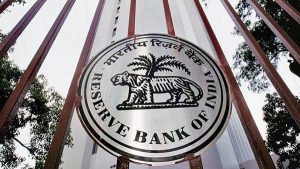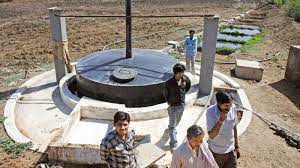Today’s Current Affairs: 31st Jul 2023 for UPSC IAS exams, State PSC exams, SSC CGL, State SSC, RRB, Railways, Banking Exam & IBPS, etc
Table of Contents
SemiconIndia 2023 : Gujrat

Prime Minister inaugurates SemiconIndia 2023 in Gujarat, emphasizing India’s potential to become a global semiconductor hub and its commitment to innovation and technology.
- Semicon India is an annual conference organized by the India Semiconductor Mission (ISM) with the primary objective of promoting the growth and development of India’s semiconductor industry.
- It aims to showcase India’s capabilities in semiconductor design and manufacturing while facilitating networking and knowledge exchange among participants.
- Semiconductors are materials with unique electrical properties, crucial in manufacturing various electronic devices and playing a significant role in modern technology.
Colombo Security Conclave (CSC) Framework:

A successful joint expedition of ocean scientists from India, Bangladesh, and Mauritius, organized under the Colombo Security Conclave (CSC) framework.
- The expedition onboard ORV Sagar Nidhi was the first of its kind under the CSC framework,
- Objective is to enhance ocean observation and data collection to predict and manage changes in the Indian Ocean’s regional environment and fostering collaboration in measuring and modelling ocean parameters for better forecasting and services in the region.
Colombo Security Conclave:
- It is a trilateral maritime security grouping formed in 2011, consisting of India, Sri Lanka, and the Maldives. Mauritius is the fourth member, and Bangladesh and Seychelles attended as observers with invitations to join the group.
- The CSC focuses on enhancing and strengthening regional security in five pillars:
- Maritime Safety and Security
- Countering Terrorism and Radicalization
- Combating Trafficking and Transnational Organized Crime
- Cyber Security and Protection of Critical Infrastructure and Technology
- Humanitarian Assistance and Disaster Relief
- It serves as India’s outreach to the Indian Ocean (in alignment with India’s vision of “SAGAR” vision), emphasizing regional cooperation and shared security objectives.
- It also aims to counter China’s influence in the region and reduce the Chinese footprint in member countries.
The State Of Climate In Asia 2022 : World Meteorological Organisation Report

According to the State of climate in Asia 2022 report released by the World Meteorological Organisation (WMO), Asia is the world’s most disaster-prone region.
- One of a series of WMO regional State of the Climate reports, it was released during a meeting of the UN Economic and Social Commission for Asia and the Pacific’s (ESCAP) Committee on Disaster Risk Reduction.
- UN ESCAP (HQ: Bangkok; founded in 1947) is one of the five regional commissions under the jurisdiction of the United Nations Economic and Social Council.
Highlights of the report:
- Over 50 million people were directly affected due to 81 weather, climate and water-related disasters in Asia during 2022.
- The number of disaster events in the region decreased in comparison to 2021 (over 100 natural hazards).
- But the effects of such events in 2022 were much more pronounced, with an increase in the number of fatalities, people affected and economic damage.
- The economic cost of the damage has been over $ 36 billion and Pakistan accounted for 42% of this.
Herbig-Haro 46/47 : Image From The James Webb Space Telescope

NASA recently released a high-resolution image from the James Webb Space Telescope (JWST), showing two actively forming stars known as Herbig-Haro 46/47.
- These young stars are hidden within an orange-white blob surrounded by gas and dust, indicating their early stages of growth.
- They will give insights into the mass accumulation of stars over time.
- Observing the orange lobes helps understand how stars ejected and consumed gas, shaping the lobes over thousands of years.
James Webb Space Telescope:
- It is a large, infrared telescope designed to observe the most distant objects in the universe.
- It is the successor to the Hubble Space Telescope.
- It is a collaboration between NASA, the European Space Agency (ESA), and the Canadian Space Agency (CSA).
Fast Radio Bursts : Study

An international team of astronomers studied repeating Fast Radio Bursts (FRB), FRB 20190520B, using the Green Bank Telescope in the U.S. and the Parkes Observatory in Australia. The report was published in the journal Science.
- Fast Radio Bursts are mysterious emissions of radio light (or Radio Waves) that come from the far reaches of the universe.
FRBs reach Earth from faraway galaxies, emitting as much energy in a millisecond as the sun does over weeks. - They are the brightest radio bursts found in nature.
Astrophysicists have only been able to ‘see’ FRBs momentarily using large radio telescopes, but their precise origins and causes are unknown. - Some FRBs are ‘one-off’ phenomena, while others are repeaters, flashing earth intermittently.
Highlights of the Study:
- The astronomers discovered that the Faraday rotation measure of the repeating FRB 20190520B was highly variable and reversed direction twice.
- This measure is an indicator of the FRB’s magnetic field strength.
- The variation in the FRB’s magnetic field strength and the direction of the reversal led the researchers to conclude that the FRB source is likely orbiting a binary star system, where the companion star is possibly a massive star or a black hole.
- This led to the raising of the possibility that “all repeating FRBs could be in binaries.”
- However, further monitoring and research are required to confirm this hypothesis.
- The observed changes in the magnetic field and electron density around the FRB source suggest the presence of a turbulent magnetized plasma environment.
- This environment likely influences the behavior of the FRB signals.
- The study underscores the significance of advanced radio telescopes in studying FRBs and other intergalactic phenomena.
- These telescopes, such as the Very Large Array and the Deep Synoptic Array-110, enable precise localization of FRBs and provide valuable data for understanding their sources and characteristics.
- The study emphasizes the role of radio astronomy in unraveling cosmic mysteries and deepening our understanding of the universe.
Digital Payment Index : RBI

As per Reserve Bank of India’s Digital Payments Index (RBI-DPI) , Digital payments across the country registered a growth of 13.24% in a year through March 2023.
- Digital Payment Index has been constructed by the RBI to measure the extent of digitisation of payments across the country.
- It is based on multiple parameters and reflects the expansion of various digital payment modes accurately.
- It is a first-of-its kind index to measure the spread of digital payments across the country.
- It contains five broad parameters that measure the deepening and penetration of digital payments in the country over different time periods.
- Payment Enablers with a weight of 25% (Internet, mobile, Aadhaar, bank accounts, participants, merchants)
- Payment Infrastructure – Demand-side factors weight 10% (Debit and credit cards, PPIs, Customers registered in mobile and internet banking, FASTags),
- Payment Infrastructure – Supply-side factors weight 15% (Bank branches, BCs, ATMs, PoS Terminals, QR Codes, Intermediaries),
- Payment Performance – weight 45% (Digital payment volumes, value, unique users, paper clearing, currency in circulation, cash withdrawals) and
- Consumer Centricity weight – 5% (awareness and education, declines, complaints, frauds, system downtime).
- The base period of the index is March 2018.
- The index has been published on a semi-annual basis from March 2021 onwards with a lag of 4 months.
International Tiger Day 2023:

International Tiger Day is observed globally on July 29 every year.
- International Tiger Day is observed on July 29 each year.
- It serves as a platform to raise awareness about the endangered tiger species.
- It is celebrated worldwide to promote comprehensive efforts in safeguarding tigers and their natural habitats, fostering harmonious coexistence between humans and tigers.
- Global Tiger Day, commonly referred to as International Tiger Day, was first established in 2010 during the Saint Petersburg Tiger Summit by nations that are home to tigers.
- 13 tiger range countries came together to create Tx2 – the global goal to double the number of wild tigers by the year 2022.
- The 29th of July was chosen as International Tiger Day because it represents the halfway point between the first and last days of the Saint Petersburg Tiger Summit and the ongoing international campaign to rescue tigers.
Akhil Bhartiya Shiksha Samagam 2023: Under PM SHRI Scheme

Prime Minister will inaugurate Akhil Bhartiya Shiksha Samagam 2023 and also release the first instalment of funds under the PM SHRI Scheme at the event.
- Pradhan Mantri Schools for Rising India (PM-SHRI) Scheme is a Centrally Sponsored scheme announced in 2022.
- Objective is development of more than 14500 schools across the country by strengthening selected existing schools being managed by Central Government/ State/ UT Government/ local bodies.
- The duration of the scheme is from 2022-23 to 2026-27,after which it shall be the responsibility of the States/UTs to continue to maintain the benchmarks achieved by these schools.
- The selected schools will act as exemplar schools showcasing all components of the National Education Policy 2020 (NEP) and offering mentorship to other schools in their vicinity.
- The PM SHRI Schools will be developed as Green Schools, incorporating environment-friendly aspects.
- The focus will be on the learning outcomes of every child in every grade.
- Assessment at all levels will be based on conceptual understanding and application of knowledge to real-life situations and will be competency-based.
- Linkage with Sector Skill Councils and local industry for enhancing employability and providing better employment opportunities will be explored.
- A School Quality Assessment Framework (SQAF) is being developed, specifying the key performance indicators to measure outcomes. Quality evaluation of these schools at regular intervals will be undertaken to ensure the desired standards.
Corporate Debt Market Development Fund (CDMDF):

The Union Finance Minister launched the Corporate Debt Market Development Fund (CDMDF).
- Corporate Debt Market Development Fund is a backstop facility for specified debt funds during market dislocations.
- The fund is intended to provide liquidity support in the event of a financial crisis.
- It will be in the form of an alternative investment fund (AIF), meant to instil confidence among the participants in the Corporate Bond Market during times of stress
- The fund has Rs 33,000-crore backstop facility for Mutual Funds.
- Of the Rs 33,000 crore, Rs 30,000 crore will come from the government, while the balance Rs 3,000 crore will be contributed by the Asset Management Companies.
- Contributions to the fund can be done by the specified debt-oriented mutual fund schemes and asset management companies of mutual funds.
- This fund is guaranteed by the National Credit Guarantee Trust Company (NCGTC) and the backstop facility will be managed by SBI Mutual Fund.
Graded Response Action Plan : Revised Measures

The Commission for Air Quality Management in NCR & Adjoining Areas (CAQM) announced revision of the Graded Response Action Plan (GRAP) which will come into force w.e.f. 1st October, 2023 in the entire National Capital Region.
- Graded Response Action Plan is a set of emergency measures that kick in to prevent further deterioration of air quality once it reaches a certain threshold in the Delhi-NCR region.
- The GRAP was first notified in January 2017 by the Ministry of Environment, Forest and Climate Change.
- The Commission for Air Quality Management (CAQM) has constituted a sub-committee for the operationalization of the GRAP.
- This body includes officials from the CAQM, member secretaries of pollution control boards of Uttar Pradesh, Delhi, Haryana, Rajasthan, the Central Pollution Control Board, a scientist from the IMD and one from the IITM and Health Advisor.
- The sub-committee is required to meet frequently to issue orders to invoke the GRAP.
- The orders and directions of the CAQM will prevail in case of any conflict between directions issued by the State governments and the CAQM.
- Revised measures:
- Stage I – ‘Poor’ Air Quality (AQI ranging between 201-300): Enforce NGT / Hon’ble SC’s order on over aged diesel / petrol vehicles.
- Stage II – ‘Very Poor’ (AQI 301-400): Rigorous actions to combat air pollution at identified hotspots in the region.
- Stage III – ‘Severe’ (AQI 401-450): Impose strict restrictions on BS III petrol and BS IV diesel four-wheelers in certain areas and may suspend physical classes in schools for primary grade children up to Class 5.
- Stage IV – ‘Severe Plus’ (AQI greater than 450) : When the AQI exceeds 450, four-wheelers registered outside Delhi, except for electric vehicles, CNG vehicles, and BS-VI diesel vehicles, will not be allowed to enter the city.
Gobardhan Portal : Registered Biogas Plants

Over 1,200 biogas plants have registered on the Gobardhan portal since it was launched, according to an official release.
- Gobardhan portal serves as a centralized repository for assessing investment and participation in the Biogas/CBG (Compressed Biogas) sector at a pan-India level.
- Objective is to streamline the process of setting up CBG/Biogas plants in the country.
- It allows any government, cooperative or private entity operating or intending to set up a Biogas/CBG/Bio-CNG plant in India to obtain a registration number by enrolling in the portal.
- This registration number will enable them to avail a multitude of benefits and support from the Ministries and Departments of the Government of India.
GOBARdhan Scheme:
- Galvanizing Organic Bio-Agro Resources Dhan is a crucial umbrella initiative of the Government of India.
- The government launched the Gobardhan scheme in 2018 as a national priority project under the Swachh Bharat Mission Grameen-Phase II program.
- Aim is to generate wealth and energy by converting cattle dung, agricultural residue, and other organic waste into Biogas, CBG and bio-fertilizers.
- It adopts a whole-of-government approach and aims to convert waste into wealth, thereby promoting a circular economy.
- Nodal Ministry: The Department of Drinking Water and Sanitation, Ministry of Jal Shakti.
World Hepatitis Day 2023:

World Hepatitis Day was recently observed on July 28
- World Hepatitis Day is observed each year on July 28 to raise awareness of viral hepatitis, which causes inflammation of the liver that leads to severe disease and liver cancer.
- It is recognized by the World Health Organization (WHO).
- The theme for World Hepatitis Day 2023 is “We’re not waiting”. This theme highlights the need for urgent action to eliminate viral hepatitis by 2030.
- July 28 is the birthday of Dr. Baruch Blumberg (1925–2011).
- Blumberg discovered the hepatitis B virus in 1967, and 2 years later, he developed the first hepatitis B vaccine.
- These achievements culminated in Dr. Blumberg winning the Nobel Prize in Physiology or Medicine in 1976.
Hepatitis:
- Hepatitis is inflammation of the liver.
- Inflammation is swelling that happens when tissues of the body are injured or infected.
- It can damage your liver.
- This swelling and damage can affect how well your liver functions.
- Hepatitis can be an acute (short-term) infection or a chronic (long-term) infection.
- There are different types of hepatitis, with different causes:
- Viral hepatitis is the most common type. It is caused by one of several viruses — hepatitis viruses A, B, C, D, and E.
- Alcoholic hepatitis is caused by heavy alcohol use.
Parkachik Glacier : Study

A new study by scientists of Wadia Institute of Himalayan Geology has found that three glacial lakes are likely to form around Parkachik Glacier in Ladakh due to rapid ice melt.
- The Parkachik glacier is one of the largest glaciers in the Suru River valley, covering an area of 53 square km and is 14 km long.
- The Suru River valley is a part of the southern Zanskar Ranges in the western Himalayas.
- There are two main reasons for the rapid melting of the glacier.
- The first is global warming and increasing temperatures in the region.
- The second is that it is at a lower altitude than other glaciers in the Zanskar region.
- Zanskar is a high altitude semi-desert lying on the Northern flank of the Great Himalayan Range.
- This mountain range acts as a climatic barrier protecting Ladakh and Zanskar from most of the monsoon, resulting in a pleasantly warm and dry climate in the summer.




